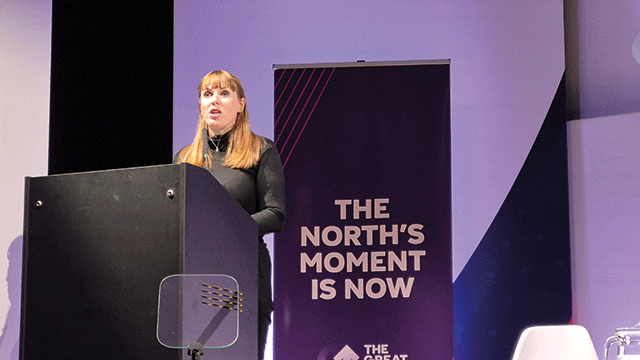Down on the banks of Regent’s Canal in north-west London, Richard Banks is performing quite a juggling act. The chief executive of development company European Land is overseeing a project that, in its latest residential phase, is more than 70% sold off-plan and has brought in more than £100m in sales. But this good news story is just one chapter of a longer, broader and far more challenging tale.
The project in question is Merchant Square, the 13-acre core of the Paddington Basin redevelopment masterplan. Banks is responsible for keeping the six-building, £750m scheme, which includes a proposed 42-storey tower that will become the tallest in Westminster, on track.
He must ensure development happens in the right order to best suit the ever-changing economic situation – most recently to counteract the weakened commercial market. Then there is the added risk of managing a scheme located in one of the capital’s forgotten quarters. The site is a former wasteland, miles from the east London and Vauxhall boom areas and on the periphery of the hustle and bustle that makes the capital such an attractive place to live and work. In short, this is a project that could so easily have fallen victim to being in the wrong place at the wrong time.
Here, Banks reveals how he has steered Merchant Square away from this fate by embracing change – a strategy he now believes will see the rest of the project sail smoothly out of the other side of the commercial downturn.
All change
Even without a global recession and the biggest UK property crash in recent history hitting halfway through development, the Merchant Square project was always going to be a tough one to pull off. The site didn’t even have electricity or gas when work started nearly 15 years ago and was home to a colossal waste treatment station.
“Just how do you stitch a big piece of development back into central London?” asks Banks semi-rhetorically. “It’s difficult. It can’t happen overnight.” He says that three main things have underpinned the success of the Merchant Square scheme under such difficult conditions – strong investment, transport links and flexibility. There is a steady finance model behind the scheme – a 50:50 joint venture between Simon and David Reuben, the second most wealthy men in the UK according to the Forbes list of billionaires 2012 – and the Jarvis family. Then there is the fact that, despite the development location in a formerly unloved part of the capital, the scheme’s proximity to Paddington station and the Heathrow Express makes it an attractive option for UK and international buyers.
With these two factors firmly in place from the word go, it has been Banks’ job since he joined European Land in 2006 to build in the flexibility. He explains that the project has softened over the years to better reflect the standard and style of what has been delivered in central London.
There has been a move away from the more perfunctory office buildings developed at the start, such as Lord Richard Rogers’ Waterside House. The new office tower, 5 Merchant Square, which is already part occupied by Orange and Marks & Spencer – which signed a 30-year lease in 2010 at £53.50 per sq ft – is better equipped to serve occupiers and the general public. Balconies elevate the views over London out to Battersea Power Station and beyond to an even more heart-stopping status for office workers. A public lobby and café adds to the scheme’s public realm offering.
The turbulent economic climate since 2008 has been the biggest catalyst for change: “Number 3 was an office building in the original masterplan,” says Banks. “That was altered to respond to the market and now – as a residential scheme – it is breaking Paddington records. We are 70% sold and have made over £100m. The 159 private flats priced from £687,500 for a one-bedroom unit will be completed by 2014 and our buyers have been a total cross-section from the ages of 20 to 80. We have a London-driven sales strategy, so we have a large number of domestic buyers, but we have also been selling all over the world to buyers from South East Asia, the Middle East, mainland Europe and Australasia.”
As for the commercial side of the development, Banks admits the market is tough: “Commercial is not faring as well as residential at the moment,” he concedes. “But all of the commercial buildings will be built with a prelet and we can just shift things about and reshuffle the order to ensure we don’t end up being delayed. You are talking about such an inordinate amount of time here. The construction time of 3 Merchant Square alone is three years. When you start thinking about the project in those terms then there is a lot of time to move things about. And there are physical constraints – building requires a lot of room so you couldn’t do everything at the same time, even if the demand was there.
“The ability we have had here to be flexible and reorder means that I see no reason to be concerned about this scheme being delayed. Building on 3 Merchant Square will peak next winter and complete by summer 2014, by which time we can move on to the next phase.”
Opportunities
Banks won’t be drawn on exactly which part of the project will follow on after the completion of 3 Merchant Square, but he does say that the focus will remain on the stronger residential market. The final three proposed buildings include one commercial scheme and two further residential buildings – one of which will be 1 Merchant Square, the 42-storey landmark tower that has already been dubbed “the Cucumber”. “We certainly didn’t come up with that name,” laughs Banks. “The British have this strange obsession with naming buildings after vegetables and kitchen utensils.”
Banks adds that the multi-phased nature of the scheme will mean more opportunities for the property sector on upcoming phases, from everything from sales agents to CGI designers. “We look at the different parts of the project as single phases,” he says. “My message to the property industry is to be aware of the fact that we are always on the look out, keeping our eyes on as many firms as possible, so we catch the right people at the right time.”
Yet more juggling then. But Banks can probably handle it.
At a glance
1 Merchant Square is the proposed landmark building for Paddington Basin. Dubbed “the Cucumber”, the 42-storey tower will be the tallest in Westminster, with a hotel, apartments and a sky bar.
2 Merchant Square is a proposed 17-storey office building facing Harrow Road.
3 Merchant Square is due for completion in summer 2014. The 20-storey, mixed-tenure building was originally planned to be offices but has been developed as a residential scheme. Apartments start at £687,500 for a one-bedroom flat, and £1.02m for a two-bedroom flat.
4 Merchant Square, known as Waterline House, was completed in 2010. Designed by architect Tryfon Kalyvides Partnership, it is a 16-storey residential building.
5 Merchant Square was also completed in 2010. The 262,000 sq ft, Michel Mossessian and Partners-designed building has 15 storeys, and is partly occupied by Marks & Spencer.
6 Merchant Square is a 15-storey, mixed-tenure residential building.











